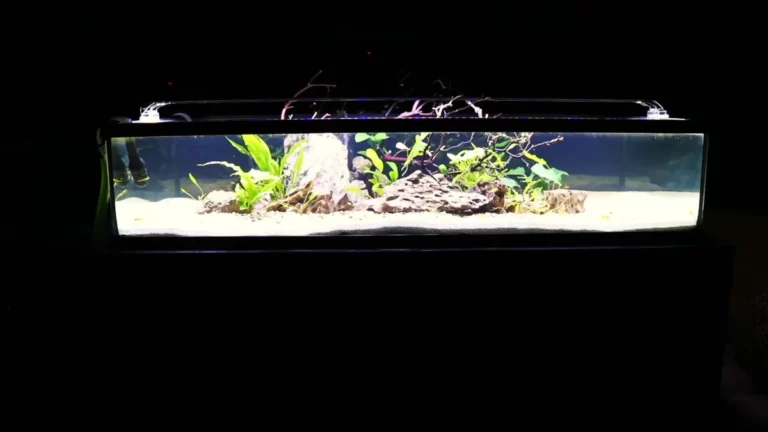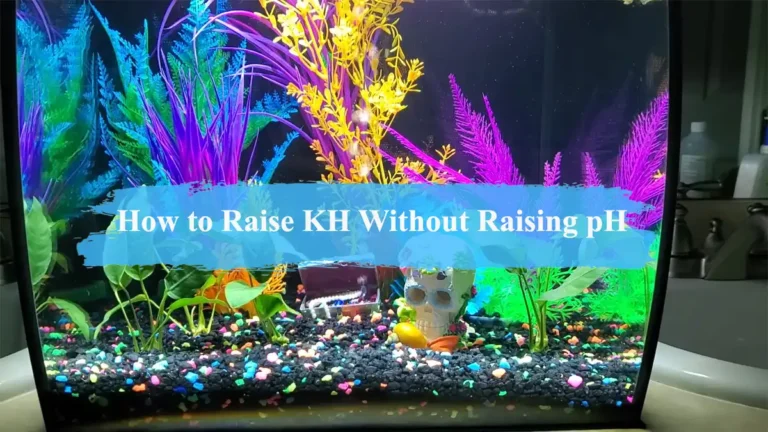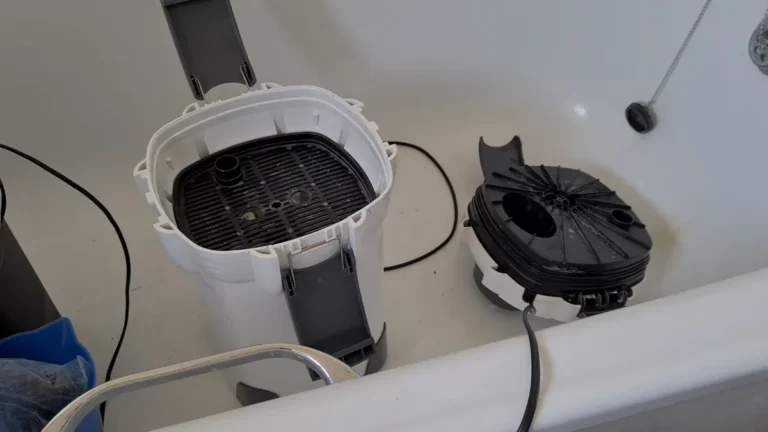What is KH in Aquarium? A Clear and Neutral Explanation
KH, or Carbonate Hardness, is a crucial parameter in maintaining a healthy underwater ecosystem. It plays a significant role in regulating pH stability and ensuring the well-being of aquatic inhabitants. Despite its importance, many aquarium owners are unfamiliar with KH and its significance.
In this article, readers will learn about the significance of KH, how to measure it, and why it is often expressed in degrees rather than the more familiar milligrams per liter or parts per million. The article will also cover ideal KH levels for different fish species, how to adjust KH levels, and the effects of incorrect KH levels. Additionally, common misconceptions about KH in aquariums will be addressed in a FAQ section.
Key Takeaways
- KH, or Carbonate Hardness, is a crucial parameter in maintaining a healthy underwater ecosystem.
- Ideal KH levels vary for different fish species, and incorrect levels can have adverse effects on aquatic inhabitants.
- Measuring and adjusting KH levels can help ensure the overall well-being of your aquarium.

What is KH in Aquariums?
KH, also known as carbonate hardness, is a measure of the amount of carbonates and bicarbonates in the water of an aquarium. This parameter is important because it affects the buffering capacity of the water. KH helps neutralize acids and prevents rapid changes in pH, which can cause health issues in fish.
KH is typically measured in degrees of KH (dKH) or parts per million (ppm). One dKH is equivalent to 17.848 mg/L or 17.848 ppm. The ideal KH level for an aquarium depends on the type of fish and plants being kept. Generally, freshwater aquariums should have a KH between 3-8 dKH, while saltwater aquariums should have a KH between 7-11 dKH.
It is important to note that KH and GH (general hardness) are not the same thing, although they are often confused. GH measures the amount of dissolved minerals in the water, such as calcium and magnesium, while KH measures the amount of carbonates and bicarbonates. While both parameters are important, they have different effects on the water chemistry and should be managed separately.
To test the KH of an aquarium, a test kit can be used. For freshwater tanks, a test kit that measures in dKH is recommended, while for saltwater tanks, a test kit that measures in ppm is preferred. Regular testing and monitoring of KH levels can help prevent sudden changes in pH and ensure the health and well-being of aquarium inhabitants.
There are several ways to increase KH levels in an aquarium, including water changes, adding KH buffers, or using substrates that contain calcium carbonate. On the other hand, if the KH level is too high, it can be lowered through the use of reverse osmosis water or dilution with low KH water.
The Importance of KH in Aquariums
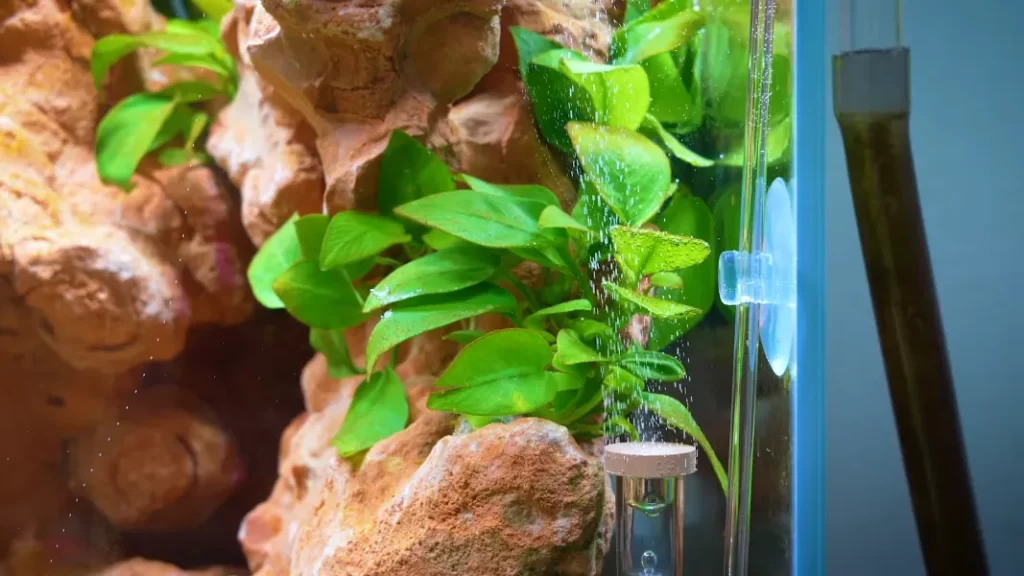
KH, also known as carbonate hardness, is a crucial parameter to measure and maintain in an aquarium. It measures the water’s buffering capacity, or its ability to resist changes in pH. Maintaining the proper KH level is essential for the overall health and well-being of the aquarium and its inhabitants.
Low KH levels can result in pH swings, which can be harmful to the aquatic creatures. Fish and other aquatic creatures have specific pH requirements, and sudden changes in pH can cause stress, illness, and even death. On the other hand, high KH levels can make it challenging to adjust the pH of the water, which can be problematic if the aquarium requires a specific pH range.
KH also helps prevent the buildup of harmful nitrates in the water, which can lead to poor water quality and health issues for the aquatic creatures. There are many factors that can affect the KH level in an aquarium, such as the type of substrate, the amount of aeration, and the frequency of water changes. Regularly testing the KH level and making adjustments as necessary is crucial to ensure a stable and healthy environment for the aquarium’s inhabitants.
How to Measure KH in Aquariums
Measuring KH in aquariums is crucial to maintain a healthy aquatic environment. KH, also known as carbonate hardness, affects the pH stability of the water, which is essential for the well-being of fish and other aquatic organisms. There are several methods to measure KH in aquariums, including test kits, pH meters, and titration methods.
Test Kits
Test kits are the most common and affordable method to measure KH in aquariums. These kits use chemical reagents that change color based on the amount of carbonate and bicarbonate ions in the water. The color change is then compared to a color chart to determine the KH level. Some popular aquarium test kits include the API KH Test Kit, Salifert KH/Alkalinity Test Kit, and Red Sea KH/Alkalinity Pro Test Kit. Test kits are easy to use, and the results are relatively accurate.
pH Meters
pH meters are electronic devices that measure the pH of a solution. They can also be used to measure KH indirectly by measuring the pH before and after the addition of an acid. The difference in pH can be used to calculate the KH level. However, pH meters can be expensive and require calibration and maintenance. pH meters are more accurate than test kits, but they are not commonly used in home aquariums.
Titration Methods
Titration methods involve adding a known amount of acid to the water until the pH reaches a certain endpoint. The endpoint is determined by a color change or a pH meter. The amount of acid required to reach the endpoint is then used to calculate the KH level. This method is more accurate than test kits but requires more time and effort. Titration methods are commonly used in laboratories or by experienced aquarists.
In conclusion, measuring KH in aquariums is an essential aspect of aquarium maintenance. Test kits are the most common and affordable method to measure KH, while pH meters and titration methods are more accurate but require more time, effort, and expense. It is recommended to measure KH regularly to ensure a stable and healthy aquatic environment.
Ideal KH Levels for Different Fish Species
Maintaining the ideal KH level in an aquarium is crucial for the health and well-being of fish and other aquatic creatures. The ideal KH level varies depending on the species of fish in the tank. Here are some guidelines for the ideal KH levels for different fish species:
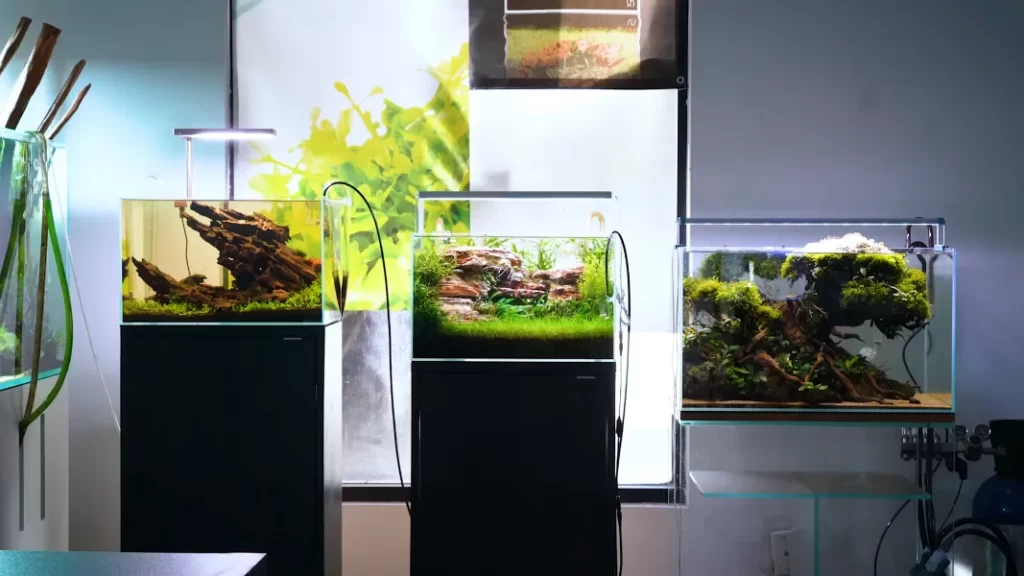
Freshwater Fish
Most freshwater fish species require a KH level between 4-8 dKH (or 70-140 ppm) to thrive. This range is ideal for most freshwater aquariums and is suitable for most tropical fish species. However, some species have specific KH requirements:
- Discus Fish: Discus fish require a lower KH level of 0-3 dKH (or 0-50 ppm) to thrive. Maintaining a lower KH level also helps to lower the pH level of the water, which is beneficial for discus fish.
- African Cichlids: African cichlids require a higher KH level of more than 10 dKH (or 180 ppm) to thrive. This higher KH level is usually associated with higher pH levels, which is ideal for African cichlids.
Saltwater Fish
Most saltwater fish species require a KH level between 7-12 dKH (or 120-200 ppm) to thrive. This range is ideal for most marine aquariums and is suitable for most marine fish species. However, some species have specific KH requirements:
- Reef Fish: Reef fish and other reef inhabitants require a KH level between 8-12 dKH (or 140-210 ppm). This range is ideal for maintaining a stable pH level in reef aquariums and is essential for the health and growth of corals and other invertebrates.
It is important to note that these are just general guidelines, and the ideal KH level may vary depending on the specific needs of each fish species. It is always recommended to research the specific requirements of each fish species before adding them to an aquarium and to regularly test and adjust the KH level as necessary.
Read More: How to Raise KH Without Raising pH: A Comprehensive Guide
Adjusting KH Levels in Aquariums
Maintaining appropriate KH levels in an aquarium is crucial as it affects the water’s ability to resist pH fluctuations. If KH levels are too low, the water becomes acidic, which can harm aquatic organisms. Conversely, if the KH levels are too high, the water becomes too alkaline, which can also be harmful. Here are some methods for adjusting KH levels in aquariums:
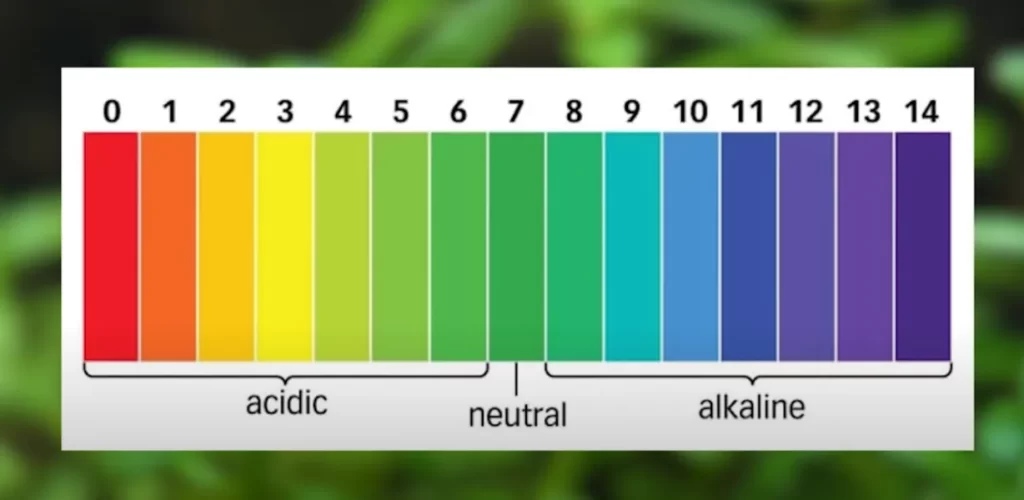
Increasing KH Levels
- Water Changes: Regular water changes can increase KH levels naturally. Adding tap water to the aquarium can increase the KH levels since tap water typically contains carbonates and bicarbonates.
- Alkalinity Buffers: Commercially available alkalinity buffers can increase KH levels in an aquarium. Different types of buffers are available for freshwater, marine, and reef tanks.
- Crushed Coral: Adding crushed coral to the aquarium can naturally increase KH levels. Crushed coral releases calcium carbonate, which increases the KH levels.
Decreasing KH Levels
- Acid Buffers: Commercially available acid buffers can decrease KH levels in an aquarium. These products contain acids that neutralize carbonates and bicarbonates in the water.
- Distilled Water: Adding distilled water to the aquarium can decrease KH levels. Distilled water contains no carbonates or bicarbonates, which can lower the KH levels in the aquarium.
It is important to note that sudden and drastic changes in KH levels can harm aquatic organisms. Gradual changes are recommended, and KH levels should be monitored regularly. Testing the water regularly with a KH test kit can help ensure that KH levels are within the appropriate range for the aquarium’s inhabitants.
Effects of Incorrect KH Levels
Maintaining the appropriate KH level is crucial for the health of aquatic life in an aquarium. If the KH level is too high or too low, it can have negative consequences on the aquarium’s ecosystem.
Low KH Levels
Low KH levels can cause a decrease in pH levels, which can harm fish and other aquatic life. When the pH level drops, it can cause stress in fish and affect their ability to breathe. Low KH levels can also cause an increase in acidity, which can damage plants and other aquatic life. Symptoms of low KH levels include:
- pH fluctuations
- Acidic water
- Difficulty maintaining a stable pH level
- Stress in fish
To correct low KH levels, buffers such as baking soda or crushed coral can be added to the aquarium. It is important to add buffers slowly to avoid sudden changes that can be harmful to aquatic life.
High KH Levels
High KH levels can cause the pH level to remain stable, but it can also lead to an increase in alkalinity. This can be harmful to some species of fish and other aquatic life. High KH levels can also make it difficult to adjust the pH level if it needs to be changed. Symptoms of high KH levels include:
- Difficulty lowering pH levels
- Alkaline water
- Stress in fish
To correct high KH levels, water changes can be made using water with a lower KH level. It is important to make changes slowly to avoid sudden changes that can be harmful to aquatic life.
The Importance of Monitoring KH Levels
Monitoring KH levels regularly is essential to ensure that they remain within the appropriate range. Testing kits are available to measure KH levels, and they should be used regularly to prevent any potential problems. Symptoms of incorrect KH levels include:
- pH fluctuations
- Stress in fish
- Damage to plants and other aquatic life
Overall, maintaining the correct KH level is crucial to the health of the aquarium’s ecosystem. Regular monitoring and corrective measures can help prevent any potential problems and ensure that the aquatic life remains healthy and thriving.
Common Misconceptions About KH in Aquariums
There are several misconceptions about KH in aquariums that can lead to incorrect maintenance practices. It is important to understand these misconceptions to properly maintain a healthy environment for fish, plants, and other aquatic life. Here are some of the most common misconceptions:
Misconception 1: KH and pH are the same things
One of the most common misconceptions is that KH and pH are the same things. However, KH measures the carbonate and bicarbonate ions in the water, while pH measures the acidity or alkalinity of the water. Although KH and pH are related, they are not the same thing. It is important to test both KH and pH regularly to ensure a healthy environment for aquatic life.
Misconception 2: High KH is always good for fish
Another common misconception is that a high KH level is always good for fish. While some fish species prefer a higher KH level, others prefer a lower KH level. A high KH level can actually harm fish species that prefer a lower KH level. It is important to research the specific needs of the fish species in your aquarium before adjusting the KH level.
Misconception 3: KH is not important in saltwater aquariums
Some people believe that KH is not important in saltwater aquariums, but this is not true. Maintaining the correct KH level is crucial for the health of corals and other invertebrates in a saltwater aquarium. A low KH level can cause pH fluctuations, which can be harmful to these organisms. It is important to test and maintain the correct KH level in a saltwater aquarium.
Misconception 4: KH can only be adjusted by adding chemicals
Finally, some people believe that KH can only be adjusted by adding chemicals. While adding chemicals is one way to adjust the KH level, it is not the only way. Water changes, using different types of substrate, and adjusting the aeration and circulation in the aquarium can all affect the KH level. It is important to research and use the appropriate method for adjusting the KH level based on the specific needs of the aquatic life in the aquarium.
FAQ (Frequently Asked Questions):
Is KH the Same as GH (General Hardness)?
No, they are not the same. GH measures the overall mineral content in the water, while KH focuses specifically on carbonate and bicarbonate ions. A high GH level can cause hard water, while a high KH level can lead to alkaline water. Therefore, it is important to test both GH and KH levels to maintain a healthy aquatic environment.
Can Tap Water Be Used to Increase KH?
It depends on the composition of the tap water. Some tap water sources contain sufficient carbonate ions, while others may require additional treatment to boost KH levels. Testing the tap water is key before using it in the aquarium. Additionally, it is recommended to use a water conditioner to remove any harmful chemicals and metals that may be present in tap water.
How Often Should KH Be Tested in an Aquarium?
Regular KH check-ups are recommended to maintain a healthy aquarium environment. Aim for testing once or twice a month to keep a close eye on those levels. Testing more frequently is recommended if there are any sudden changes in the aquarium, such as new additions or changes in feeding or maintenance routines.
The ideal KH range varies depending on the specific needs of the aquatic species in the aquarium. Generally, a KH range of 3 to 8 dKH (degrees of Carbonate Hardness) is suitable for most freshwater aquariums. For saltwater aquariums, a range of 7 to 11 dKH is commonly recommended. It is important to research the specific requirements of the aquatic species in the aquarium to determine the ideal KH range.


